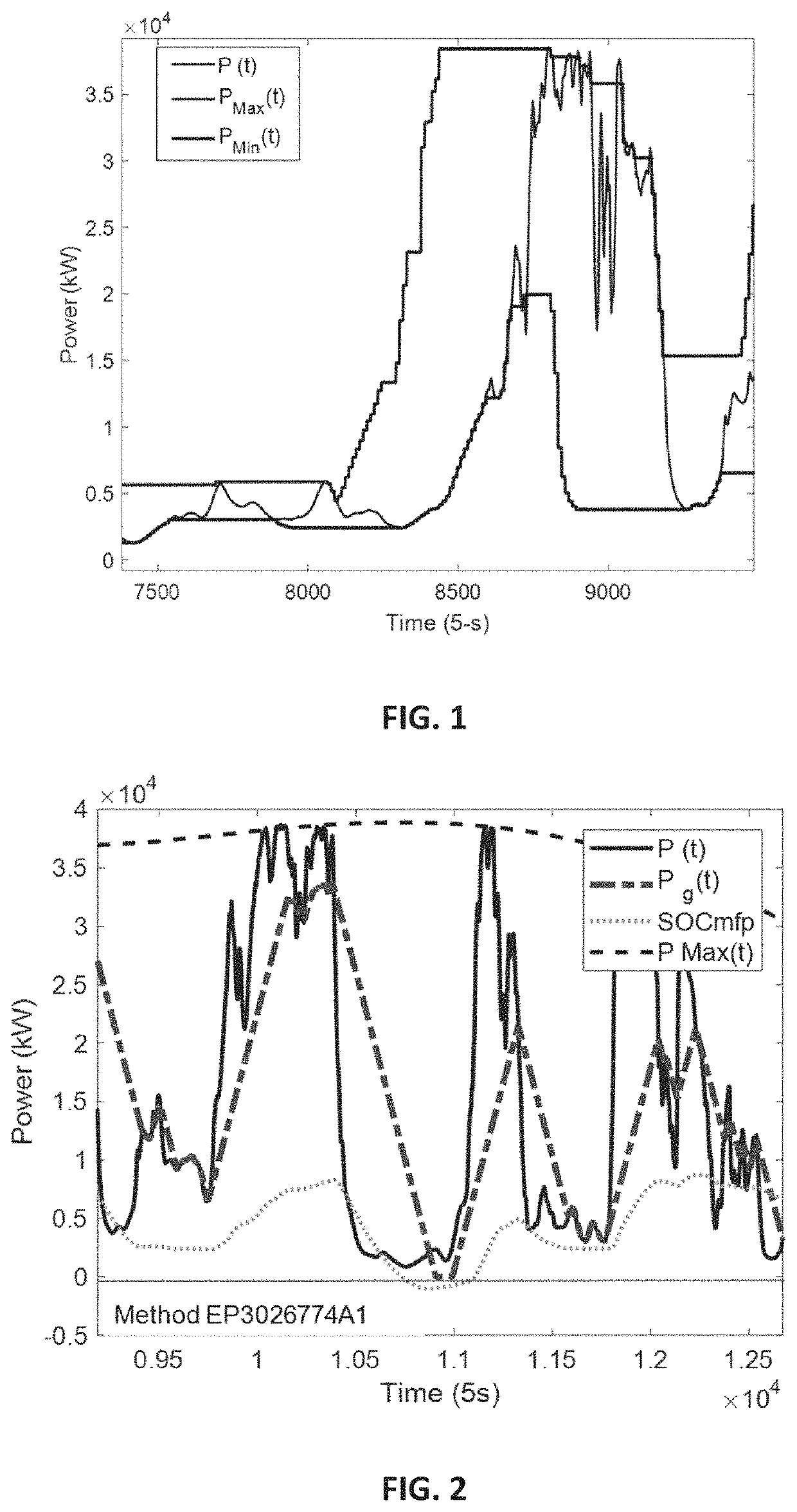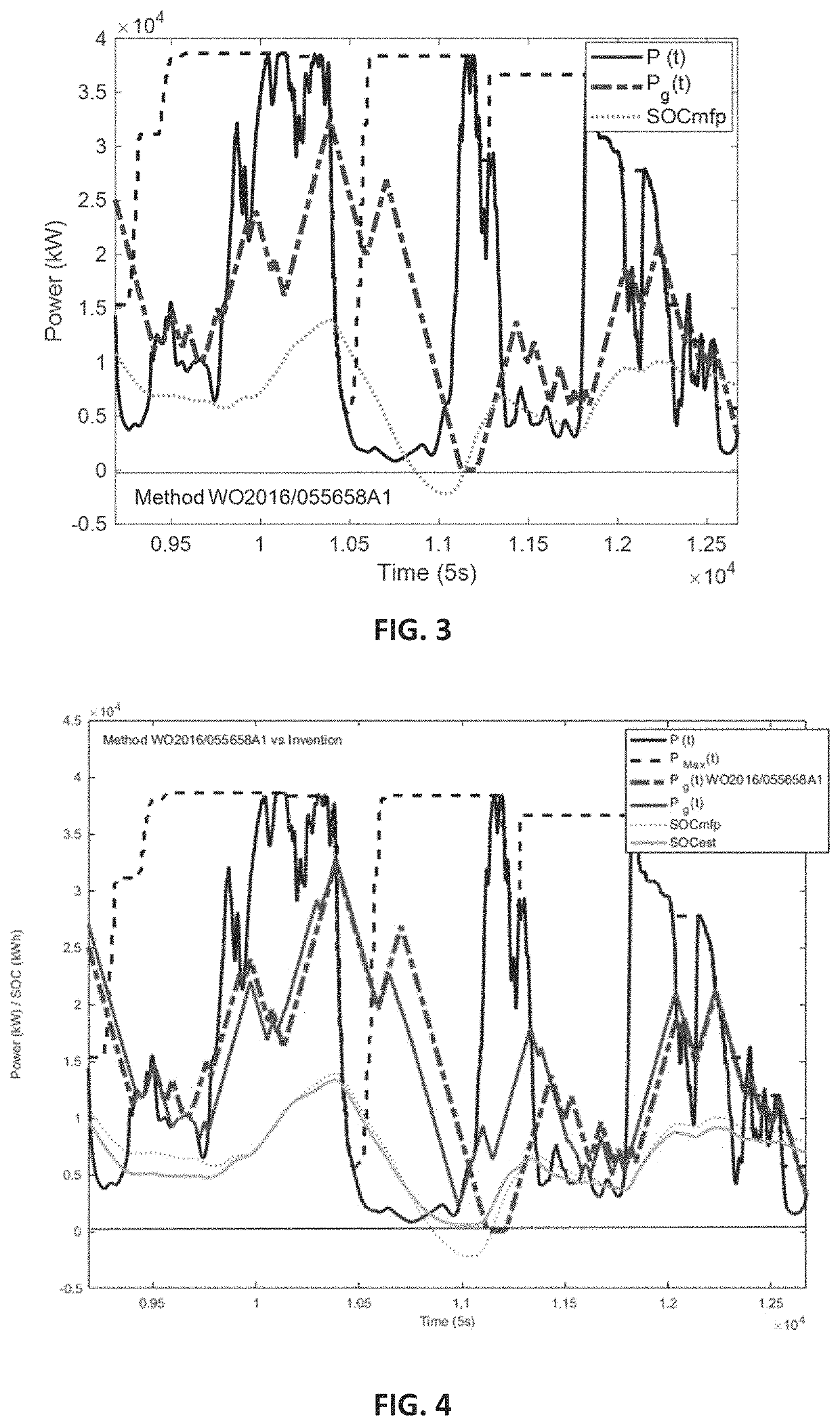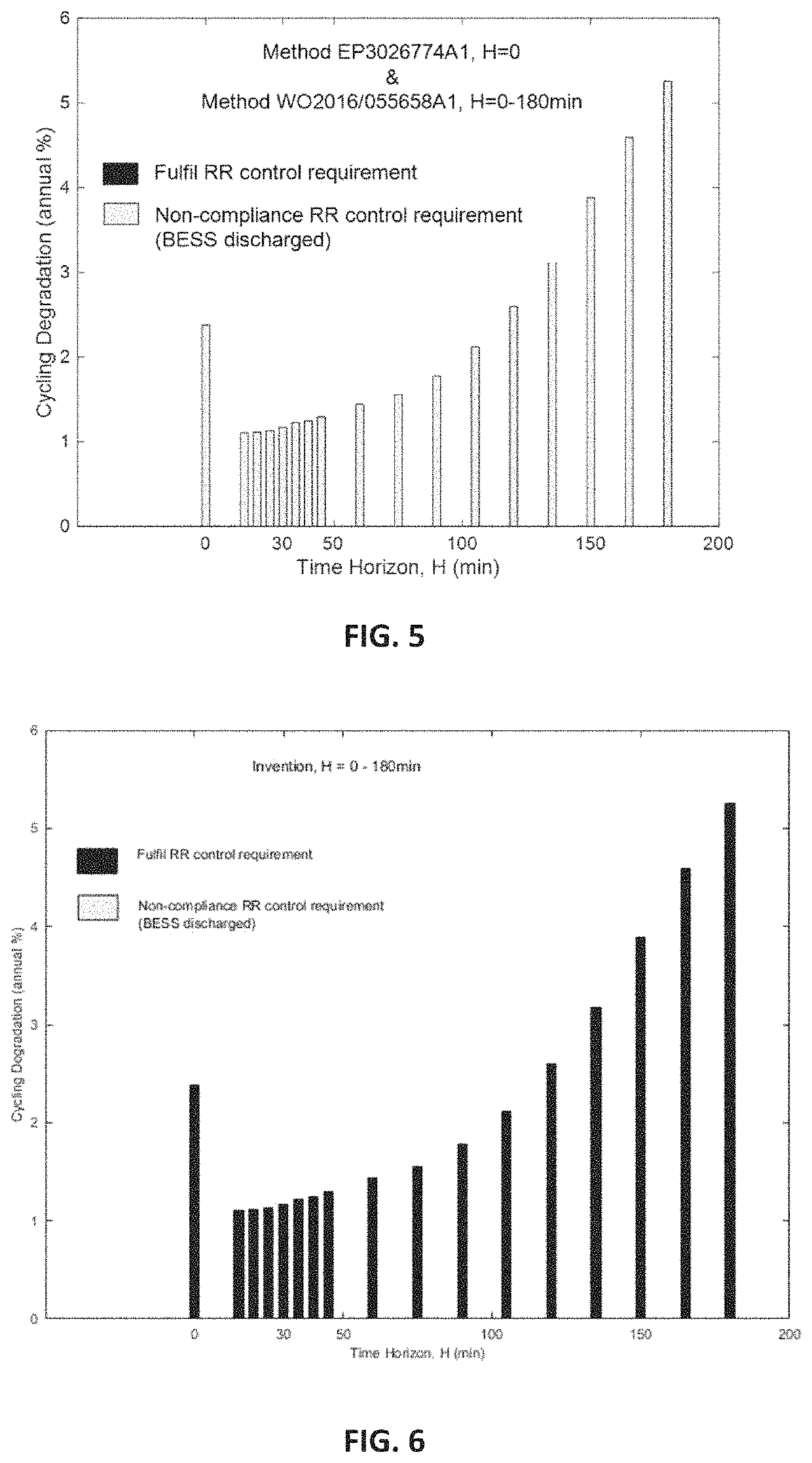Method for controlling power ramps with prediction in intermittent power generation plants
a power generation plant and power ramp technology, applied in adaptive control, process and machine control, instruments, etc., can solve the problems of large losses, increased cycle of said batteries, and unstable electrical systems, and achieve the effect of reducing investment costs
- Summary
- Abstract
- Description
- Claims
- Application Information
AI Technical Summary
Benefits of technology
Problems solved by technology
Method used
Image
Examples
Embodiment Construction
[0028]The present invention solves the indicated problem by means of a method for controlling power ramps with prediction in intermittent power generation plants, such as for example a photovoltaic solar plant, which avoids the battery from being completely discharged, which would prevent compliance with the maximum admissible ramp requirements given by a grid code regulation, or other similar document, in addition to minimizing the cycling of said storage systems, thereby reducing plant investment costs leading to a more rationalized use of the energy storage system, such that, in order to respect compliance with a same maximum fluctuation ramp, a minor use is made of the energy storage system.
[0029]Any of the strategies mentioned in the background of the invention section, assess the need to modify the SOC of the storage system to support maximum fluctuation depending on the current SOC. However, if the storage system is limiting a ramp in the generated power, P(t), this power, P(...
PUM
 Login to View More
Login to View More Abstract
Description
Claims
Application Information
 Login to View More
Login to View More - R&D
- Intellectual Property
- Life Sciences
- Materials
- Tech Scout
- Unparalleled Data Quality
- Higher Quality Content
- 60% Fewer Hallucinations
Browse by: Latest US Patents, China's latest patents, Technical Efficacy Thesaurus, Application Domain, Technology Topic, Popular Technical Reports.
© 2025 PatSnap. All rights reserved.Legal|Privacy policy|Modern Slavery Act Transparency Statement|Sitemap|About US| Contact US: help@patsnap.com



